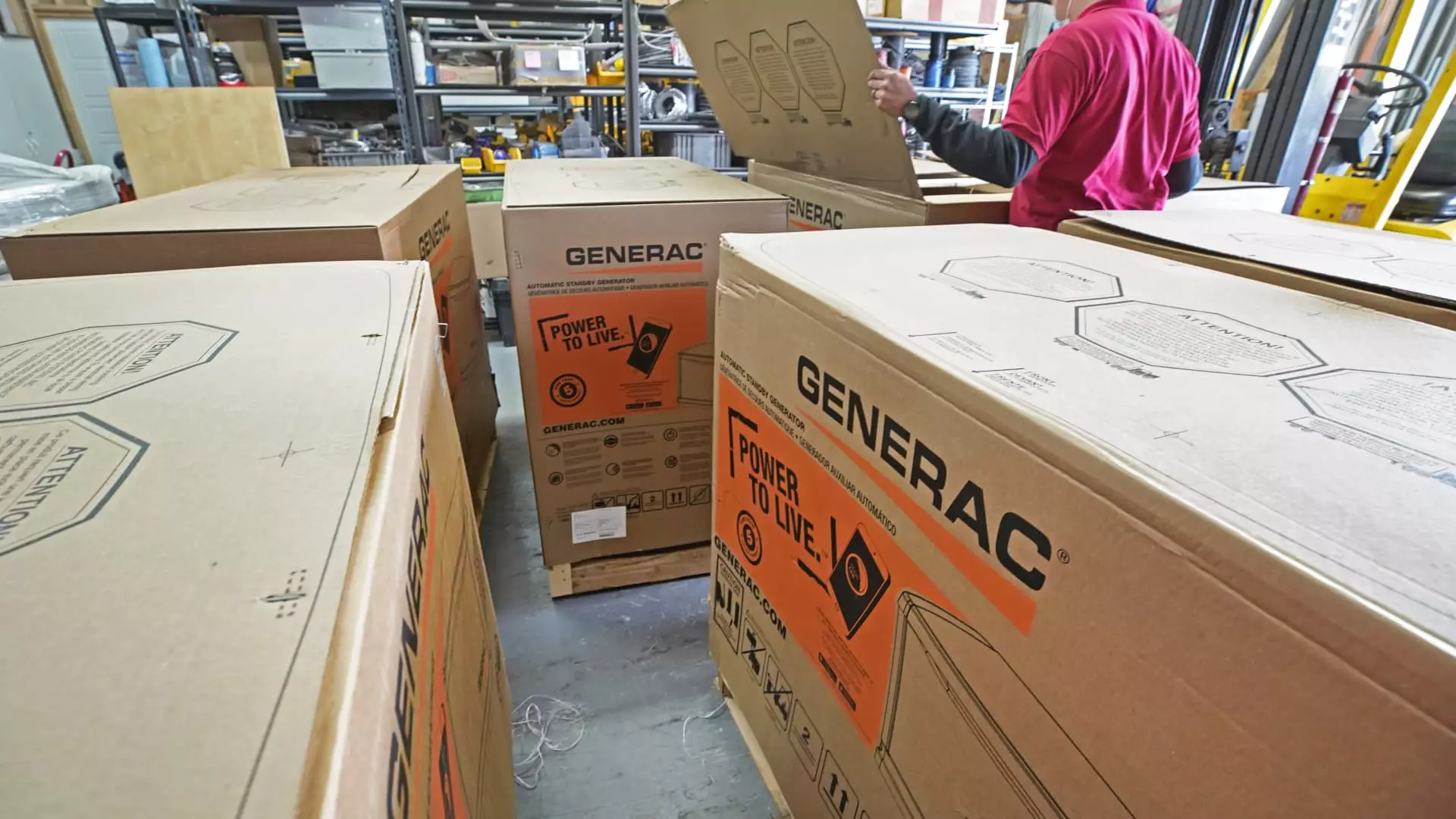As the oppressive heat waves wash over swaths of the United States, one can’t help but notice the surge in interest surrounding Generac, the leading backup-generator manufacturer. With shares climbing nearly 12% this week alone, the company seems to have captured the attention of investors. But should we celebrate this uptick, or does it signal deeper troubles lurking just beneath the surface? The truth is, while Generac’s rise suggests a burgeoning demand for backup power solutions amidst a backdrop of extreme weather, it also highlights a critical failure in our energy infrastructure—an arena that’s crumbling under the weight of climate change and systemic neglect.
Weather patterns across America have turned hostile, with high temperatures slamming the central and eastern U.S. Reports of power outages ripple through states like New York, New Jersey, and Illinois as residents desperately seek relief from sweltering heat. The National Weather Service reveals alarming statistics: advisories impact roughly 130 million people. This is not just a mere inconvenience or a nuisance—this is an emergency. The sheer enormity of individuals caught in this climatic maelstrom should make every citizen reflect on the fragility of our power grid.
An Impending Storm
The forecast for this year’s Atlantic hurricane season is equally dire, with expectations of an above-average storm count. Predictions estimate between 13 to 19 named storms, with a chilling three to five anticipated to reach major hurricane status. The knowledge that climate change can exacerbate these storms—not to mention the staggering likelihood of resultant power outages—should be enough to set alarms ringing in every corner of the nation. It is becoming painfully evident that our existing power infrastructure cannot withstand the increased stress placed upon it by a warming planet.
Even the CEO of Generac, Aaron Jagdfeld, has pointed out that the current scenario is dire. During an interview with CNBC, he articulated a point that should resonate with every American: “This has become a massively critical discussion point. This is only going to get worse.” His assertion is both a warning and a call to action, underscoring that businesses and households across the country are ill-prepared for what is coming, and the fallout from this neglect may spiral far beyond the financial markets.
The Strain on Power Infrastructure
The crux of the problem lies in the underinvestment in the U.S. energy infrastructure. Reports from reputable organizations, including the Pacific Northwest National Laboratory and the Electric Power Research Institute, indicate that climate change could increase the risk of hurricanes and power outages by an alarming 50% or more. This potential trajectory sets a disturbing precedent: as we grapple with climate disruptions in the near-term, the long-term answer does not rest solely on purchasing generators but on systematically reevaluating and innovating our energy systems as well.
While some investors are rejoicing at the prospect of profits from utilities and cooling systems—like those produced by Trane Technologies—the reality is that unless we take a proactive stance, these gains might be short-lived. The forecasts from Bank of America, projecting a 2.5% compound annual growth rate in electrical load through 2035, do not predict an easy road ahead for power providers or consumers. Yes, utility companies may see a boost, but this is merely bandaging a festering wound.
A Call for Sustainable Solutions
The trajectory of events invites skepticism about whether American institutions are truly prepared to confront the storm ahead. As stocks for energy utilities soar, we must critically assess which entities are pivoting towards sustainable solutions versus those merely riding the wave of crisis-driven demand. Analysts suggest potential “laggards” could indirectly benefit from this storm, but the underlying issue begs the question: is our society truly committed to transforming our energy infrastructure for the future?
In an era where extreme weather becomes the norm rather than the exception, our focus should shift towards resilience—strategic investments in green energy, improved energy efficiency, and, most importantly, modernization of our existing frameworks. As the climate crisis unfolds, the time to act is now, not only for the sake of our fragile planet but for every citizen grappling with the hardships of climate’s unforgiving hand. It’s not just about buying more generators; it’s about saving lives and safeguarding our collective future.

